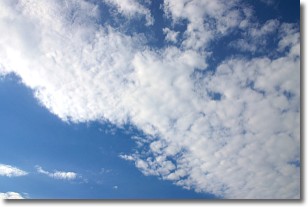Weather Alert in Washington
Special Weather Statement issued July 30 at 5:47AM PDT by NWS Seattle WA
AREAS AFFECTED: San Juan County; Lowlands of Western Whatcom County; Lowlands of Western Skagit and Northwestern Snohomish Counties; Port Townsend Area; Eastern Strait of Juan de Fuca; Western Strait of Juan de Fuca; Northern Washington Coast; Grays Harbor County Coast; Island County
DESCRIPTION: ...TSUNAMI ADVISORY IS IN EFFECT FOR THE WASHINGTON COAST AND STRAIT OF JUAN DE FUCA... * UPDATES...Tsunami waves continue to arrive along the Washington coast and Strait of Juan de Fuca. * LOCAL IMPACTS...A tsunami capable of producing strong currents that may be hazardous to swimmers, boats, and coastal structures does continue. Widespread inundation is NOT expected. * RECOMMENDED ACTIONS...If you are located in this coastal area, move off the beach and out of harbors and marinas. Do not go to the coast to watch the tsunami. Be alert to instructions from your local emergency officials * OBSERVED TSUNAMI WAVE HEIGHTS FROM EARLIER... La Push 1.3 ft Neah Bay 0.3 ft Westport 0.5 ft Toke Point 0.4 ft Port Angeles 0.3 ft Tsunamis often arrive as a series of waves or surges which could be dangerous for many hours after the first wave arrival. The first tsunami wave or surge may not be the highest in the series. * PRELIMINARY EARTHQUAKE INFORMATION... An earthquake occurred with a preliminary magnitude of 8.8. * TIDE INFORMATION... Neah Bay...Low tide of 1.3 ft at 958 AM PDT on Jul 30. High tide of 6.9 ft at 438 PM PDT on Jul 30. La Push...Low tide of 0.9 ft at 943 AM PDT on Jul 30. High tide of 7.4 ft at 415 PM PDT on Jul 30. Westport...Low tide of 1.2 ft at 956 AM PDT on Jul 30. High tide of 8.0 ft at 435 PM PDT on Jul 30. Port Angeles...Low tide of 2.2 ft at 1153 AM PDT on Jul 30. High tide of 6.4 ft at 651 PM PDT on Jul 30. Port Townsend...Low tide of 2.8 ft at 118 PM PDT on Jul 30. High tide of 8.2 ft at 811 PM PDT on Jul 30. Friday Harbor...Low tide of 2.7 ft at 147 PM PDT on Jul 30. High tide of 7.4 ft at 853 PM PDT on Jul 30. Seattle...Low tide of 3.4 ft at 214 PM PDT on Jul 30. High tide of 11.1 ft at 849 PM PDT on Jul 30. Tacoma...Low tide of 3.4 ft at 215 PM PDT on Jul 30. High tide of 11.5 ft at 852 PM PDT on Jul 30. This product will be updated as new information becomes available. Stay tuned to your local news source and NOAA weather radio for further information and updates.
INSTRUCTION: N/A
Want more detail? Get the Complete 7 Day and Night Detailed Forecast!
Current U.S. National Radar--Current
The Current National Weather Radar is shown below with a UTC Time (subtract 5 hours from UTC to get Eastern Time).

National Weather Forecast--Current
The Current National Weather Forecast and National Weather Map are shown below.

National Weather Forecast for Tomorrow
Tomorrow National Weather Forecast and Tomorrow National Weather Map are show below.

North America Water Vapor (Moisture)
This map shows recent moisture content over North America. Bright and colored areas show high moisture (ie, clouds); brown indicates very little moisture present; black indicates no moisture.

Weather Topic: What are Stratus Clouds?
Home - Education - Cloud Types - Stratus Clouds
 Next Topic: Wall Clouds
Next Topic: Wall Clouds
Stratus clouds are similar to altostratus clouds, but form at a
lower altitude and are identified by their fog-like appearance, lacking the
distinguishing features of most clouds.
Stratus clouds are wider than most clouds, and their base has a smooth, uniform
look which is lighter in color than a nimbostratus cloud.
The presence of a stratus cloud indicates the possibility of minor precipitation,
such as drizzle, but heavier precipitation does not typically arrive in the form
of a stratus cloud.
Next Topic: Wall Clouds
Weather Topic: What are Altocumulus Clouds?
Home - Education - Cloud Types - Altocumulus Clouds
 Next Topic: Altostratus Clouds
Next Topic: Altostratus Clouds
Similar to cirrocumulus clouds, altocumulus clouds are
characterized by cloud patches. They are distinguished by larger cloudlets
than cirrocumulus clouds but are still smaller than stratocumulus clouds.
Altocumulus clouds most commonly form in middle altitudes (between 2 and 5 km)
and may resemble, at times, the shape of a flying saucer.
These uncommon formations, called altocumulus lenticularis, are created by uplift
in the atmosphere and are most often seen in close proximity to mountains.
Next Topic: Altostratus Clouds
Current conditions powered by WeatherAPI.com




